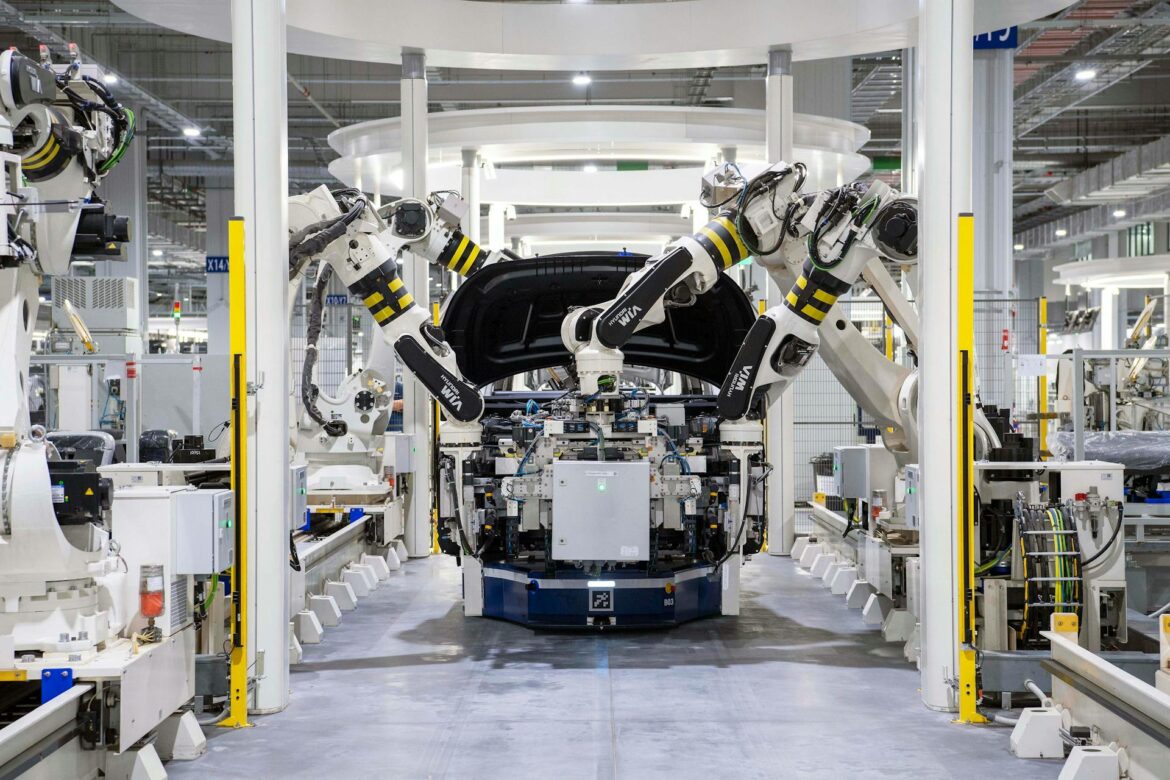In the realm of industry, automation and robotics have emerged as transformative forces, revolutionizing traditional processes and redefining efficiency in sectors like manufacturing and logistics. The integration of advanced technologies is not only streamlining operations but also enhancing productivity, safety, and precision across various industries.
Automation in Manufacturing
Automation technologies, such as robotic arms, automated guided vehicles (AGVs), and smart sensors, are revolutionizing manufacturing processes. These innovations enable tasks like assembly, welding, painting, and quality control to be performed with speed, accuracy, and consistency. By automating repetitive and labor-intensive tasks, manufacturers can boost production output while reducing errors and operational costs.
Robotics in Logistics
In the logistics sector, robotics plays a pivotal role in optimizing warehouse operations, order fulfillment, and inventory management. Autonomous mobile robots (AMRs) are increasingly used for goods transportation within warehouses, while robotic arms are employed for picking and packing tasks. These robotic solutions enhance operational efficiency, minimize human error, and accelerate order processing times in logistics facilities.
Impact on Labor Force
While automation and robotics offer numerous benefits in terms of operational efficiency and cost savings, there are concerns about their impact on the labor force. As machines take over routine tasks, there is a shift in the skill sets required by human workers. Companies are increasingly focusing on upskilling employees to operate alongside automated systems effectively. Additionally, new roles are emerging in areas like robot maintenance, programming, and system supervision.
Benefits
Some benefits of automation and robotics in manufacturing and logistics include:
- Higher Efficiency and Productivity: Automation technologies streamline processes, boost production output, and reduce operational costs, leading to increased efficiency and productivity.
- Improved Product Quality: Robotics in manufacturing and warehouses enhance product quality by ensuring consistency and precision in tasks like assembly and quality control.
- Enhanced Worker Safety: Automation reduces the risk of workplace accidents and injuries by handling physically demanding and hazardous tasks, creating a safer work environment for employees.
- Reduced Processing Time: Warehouse automation systems speed up processes, decrease handling time, and improve order accuracy, ultimately enhancing operational efficiency.
- Optimized Space Utilization: Automated storage solutions like AS/RS optimize space within warehouses by efficiently using vertical space for high-density storage and retrieval of goods.
- 24/7 Operations: Automation enables warehouses to operate continuously without interruptions, leading to faster order processing and shorter delivery times to meet the demands of e-commerce.
- Scalability and Flexibility: Automated systems can be easily scaled to accommodate changes in demand by adding additional robots or modules, allowing warehouses to adapt quickly to fluctuations in order volumes.
- Improved Employee Efficiency: Automation eliminates mundane tasks, improves employee satisfaction, speeds up work completion, and allows employees to focus on value-added tasks, enhancing overall productivity.
These benefits highlight how automation and robotics are revolutionizing manufacturing and logistics industries by improving efficiency, safety, accuracy, and overall operational performance.
Future Trends
Looking ahead, the future of automation and robotics in manufacturing and logistics is poised for continued growth and innovation. Advancements in artificial intelligence (AI), machine learning, and collaborative robotics are expected to further enhance the capabilities of automated systems. The integration of IoT devices for real-time data monitoring and analysis will enable predictive maintenance strategies and optimize resource utilization in industrial settings.In conclusion, the impact of automation and robotics on industries like manufacturing and logistics is profound. By embracing these technologies, businesses can unlock new levels of efficiency, productivity, and competitiveness in an increasingly digital world.



